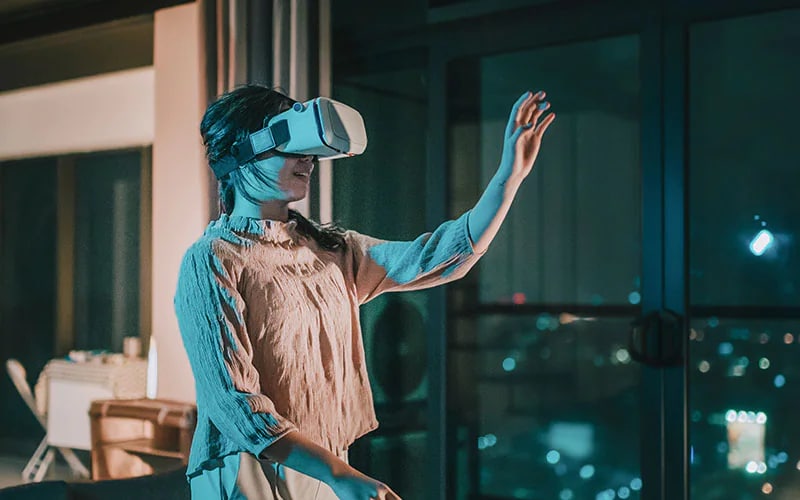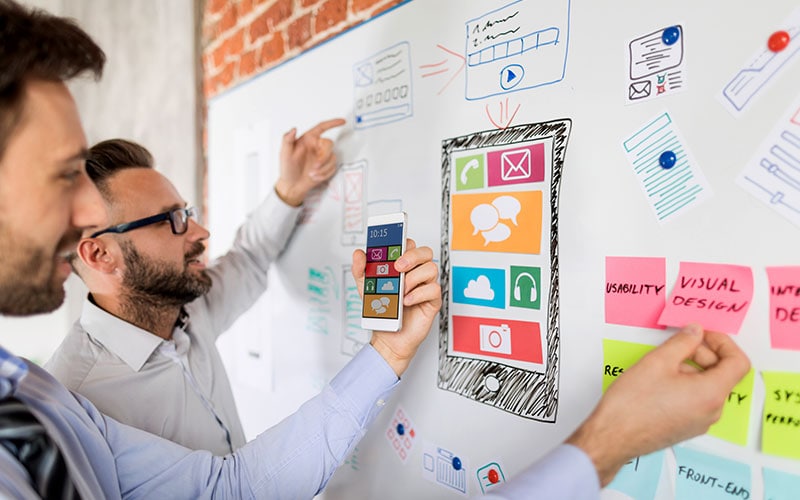Insights
- Inclusive design prevents discrimination from creeping into products, services, and systems as they are created.
- Accessible and universal design were developed to combat bias, but inclusive design takes these approaches further.
- Inclusive design allows businesses to tap into previously ignored markets.
- There are an estimated 1 billion people worldwide with disabilities, but only 10% have access to products designed for them.
- More inclusive design teams are key to developing more inclusive products and services.
Even the best-intentioned technology can have unintended and potentially negative consequences. In 2020, the Detroit police department wrongly arrested a Black man when a computer program identified him as someone else. Robert Julian-Borchak Williams spent the night in jail before the Detroit Police Department realized its mistake.1 This is believed to be the first known case of wrongful arrest in the U.S. due to faulty facial recognition, a technology that has much higher false positive rates for Asian and Black subjects.2
Explainable artificial intelligence (AI) and other tools detect and combat bias in technology. However, inclusive design prevents discrimination from creeping into the system in the first place. Organizations — from governments to businesses — should look beyond technology to understand the humanity behind the algorithms and designs.
Lack of exclusion does not equal inclusion
Design processes do not generally set out to exclude people: Most businesses want to draw from the broadest pool of potential customers and attract the best talent. Still, a lack of exclusionary policies does not mean an organization is inclusive. Companies must be active rather than neutral.
Inclusive design is a versatile approach that aids organizations’ risk management and business development strategies. Technology, products, and services created through inclusive design protects organizations from reputational damage. Simultaneously, this approach increases innovation, unlocks new markets, and boosts customer and employee loyalty and satisfaction.
Which is the best design approach — accessible, universal, or inclusive?
Leaders struggle to choose among evolving design philosophies to get the best results. Infosys has found that many organizations are unsure about the differences among the three most prominent design approaches — accessible, universal, and inclusive — or even how to define them.
Accessible design is the lowest hurdle. The goal is to remove common obstacles, usually focused on one or two aspects of a product designed for the “average” person. Accessibility generally tries to create an equivalent experience in physical or digital spaces for those with disabilities, usually through accommodations like keyboard navigation, curb cuts, and captions.3
However, “disability” is often a misunderstood term that doesn’t just describe those with physical differences, such as blindness or conditions that require the use of a wheelchair. It also includes people who find it difficult to accomplish tasks or reach goals due to autism, ADHD, and other neurological differences.
Universal design is broader in scope. It is “usable by all people, to the greatest extent possible, without the need for adaptation or specialized design,” according to architect, product designer, and educator Ron Mace.4 Historically, universal design focused on space, architecture, and physical products. It aims to serve the broadest possible range of users, rather than individual accessibility or inclusion objectives. The philosophy is to find the best size to fit all, instead of customized sizes based on user preferences.
Inclusive design — the newest and the most advanced approach — actively looks for disenfranchised and underrepresented people and seeks to create solutions for them first (see Figure 1). It focuses on a more holistic group of solutions and processes, which considers identities, cultures, and diverse perspectives with research and collaborative design. Sometimes these solutions serve a niche market but generally benefit all people — an approach described as “solve for one, extend to many.” However, attempts at inclusive design are treated as feel-good exercises that need only follow printed guidelines for color blindness and meet Americans with Disabilities Act standards. It is not enough to check boxes.
Some successful, trendy brands use an inclusive design approach to create new styles and options and to reach a broader customer base. And in some instances, these firms have pushed their industries in new directions.
Sam Farber founded the cooking and housewares company OXO after his wife’s arthritis made it difficult for her to peel apples. He decided to create a line of kitchen utensils designed for people with disabilities but that also offer superior performance for everyone else.5 Today, the business Farber started has become a global brand and is still valued by disability groups.

Inclusive design focuses on including people who have been systematically excluded from your product or experience. Inclusivity is in the lens of diversity and equality and not just differences in human abilities.
Musician Rihanna created Fenty Beauty in response to a cosmetics industry that largely catered to those with light skin tones. Fenty’s line of foundation sold 40 plus shades when it launched — more than double the number usually offered by cosmetics brands. The company viewed the representation of diversity as a driving force for its brand, which has outperformed other beauty brands founded by stars. As a result, other major brands expanded their range of shades to match Fenty.6
Figure 1. The road to inclusive design
Source: Infosys
Tapping into a new pool of customers
These inclusive design approaches address the needs of underrepresented, marginalized, and oppressed people — adding their voices to the discussion. Products and services developed in this way capture wider markets and customer bases that are often hidden in plain sight.
The World Health Organization estimates that there are more than 1 billion disabled people worldwide, including those with age-related impairments. However, only 10% of this group has access to products designed for them.7
In addition, products are often designed subconsciously for men, even though the 3.8 billion-plus women in the world hold at least $31.8 trillion worth of buying power.8 Also, there are more than 371 million people worldwide who identify as LGBTQ and have an annual spending power of $3.9 trillion.9 From a purely market-driven viewpoint, excluding so many people from the design process makes little sense — even if it is inadvertent.
Architecture that includes everyone
Inclusive design shares similarities with how architects and urban planners view the world. Architects must consider how a building’s different elements — from plumbing to doorways — interact and how an individual moves through that space. A city planner determines how residents navigate the infrastructure and experience each part of the environment.
This approach is like a Russian nesting doll with different layers of space. With each layer, designers need to understand how individual components fit and how people with different needs will experience each component.
Before incorporating inclusive design into their work, organizations must ask the following questions.
- Who is the target customer?
- What is the value impact proposition?
- How can you overcome short-term bias and look for long-term impact?

Always design a thing by considering it in its next larger context — a chair in a room, a room in a house, a house in an environment, an environment in a city plan.
Businesses need data from the targeted communities, which allow firms to create shared value systems. Short-term fact gathering doesn’t work here. Ongoing feedback should be collected through long-term community conversations and lead to multidimensional, diverse datasets that get closer to optimal inclusiveness in products and services. This incentivizes communities to trust your work and even codesign these products and services.
Inclusive design starts within
An inclusive approach typically serves customer diversity, but that is only part of the solution. Inclusive design allows organizations to build teams with diverse experiences, abilities, and viewpoints and to develop more inclusive products and services. Underrepresented classes are no longer a mysterious “other” but rather part of the fabric that ideates, creates, and iterates.
Industries or companies are supposed to have a pool of diverse talent and a representative workforce. However, many organizations struggle to assemble diverse teams for their projects.
In 2019, only 12% of the board members in the IT industry were female. Just one in 20 scientists and engineers were Black women or Latinas.10 Compared to private industry overall, the high-tech sector employed a larger share of whites, Asian Americans, and men, and a smaller share of Black, Hispanic, and women workers, according to a U.S. Equal Employment Opportunity Commission study.11
The first step toward inclusive design is a diverse and inclusive team, otherwise, imagination and execution fail in various ways.12
Gender inclusivity
The shortage of women in technology has contributed to an anti-female bias, which often deters women from joining STEM fields. Researchers from the U.N. scientific and cultural body UNESCO looked at this issue through the lens of the now ubiquitous digital assistant. “Siri’s ‘female’ obsequiousness — and the servility expressed by so many other digital assistants presented as young women — provides a powerful illustration of gender biases coded into technology products, pervasive in the technology sector and apparent in digital skills education, according to the UNESCO report.13
Another study from the University of Virginia and the University of Washington showed that an AI algorithm amplified the gender bias in photo datasets — linking images of shopping to women and shooting to men.14 In another case, a restaurant used AI, a camera, and a video screen to show pizza ads to people whose faces the AI judged to be male, and a salad ad to those it judged to be female.15
More recently, researchers and activists have pushed against categorizing gender as only female or male. There is a growing awareness of the complexity of the nonbinary population. They can have a gender that blends elements of men and women, or a gender that is different than either, or not identifying with any gender at all.
Transgender and nonbinary communities can be negatively affected by the technology that does not recognize their existence. A U.S. academic study “…found that facial analysis services performed consistently worse on transgender individuals and were universally unable to classify nonbinary genders,” according to Morgan Klaus Scheuerman, a University of Colorado doctoral student. Even something as simple as long hair often confuses systems. Scheuerman, who had long hair, reported that half of the systems categorized him as female — enforcing gender stereotypes.16
Even research into these issues can be harmful without the right input. Researchers at the University of North Carolina, Wilmington, used videos of transitioning transgender people, without their consent, to identify a before and after state. Writer and educator Janus Rose wrote of the damage this can do. “If the researchers had consulted any trans people prior to beginning the project, they would know that many of us transition because we don’t want to be linked to our past name or appearance,” Rose wrote. “We want to live our truth in the present and define our own future — not be algorithmically chained to false identities we were forced to wear in the past.”17
Racial inclusivity
Intelligent systems trained on historical data can perpetuate the inherent racial biases of the past. For example, a system programmed to assess risk for mortgage applications can be influenced by historical redlining — refusing a loan or insurance to people because their neighborhood was deemed to be a poor financial risk. In the U.S., that redlining typically happened in nonwhite areas.
The Federal Reserve Bank of Chicago found the practice of redlining in the 1930s had meaningful and lasting effects on urban development through reduced credit access and disinvestment that still resonates today.18 Ruha Benjamin, author and associate professor of African-American Studies at Princeton University, said, “the real danger … is that it’s happening under the cover of a kind of veneer of objectivity.”19 People believe a system can’t be racist, so they do not question such decisions. However, the risk in this case was assessed based on decades of tainted data.
Disability inclusivity
The disabled are not only disadvantaged by the physical world, but also often remain excluded from essential services. There are more than 61 million people with disabilities living in the U.S., according to the U.S. Centers for Disease Control and Prevention.20 But Americans with disabilities are about three times as likely as those without a disability to say they never go online (23% vs. 8%), according to a 2016 Pew Research Center survey.21
Broader inclusivity
While age, gender, and race remain in focus, inclusivity strives to recognize even more underrepresented groups. One example is neurodiversity, a variation in the human brain regarding sociability, learning, attention, mood, and other mental functions. People with autism or ADHD might find constant notifications from tech devices burdensome rather than helpful.22
Additionally, people with a specific learning style — visual, auditory, kinesthetic, and reading-writing — might be alienated by a product that only supports a single, different style. Economic status also hinders the adoption of products or services, particularly when companies seek the most affluent consumers.
Low-income individuals are also alienated by technology in many instances. Technology innovation often pushes out traditional products or services when a company expects to make maximum profits. This excludes the needs of many less wealthy consumers. “People inside an industry are so focused on creating money for their industry, nobody wants to stop the game,” said Charles Ellis, an investment consultant.23
Greater inclusiveness
Design teams want to be more inclusive, but associated barriers are more challenging than they appear. Along with fine tuning existing processes, it is essential to develop new ones that identify hidden problems and solutions. Their design decisions can improve people’s lives or make them worse. However, hiring the right team members, listening to the right voices, and adopting the right methodologies illuminate new paths.
Table 1. How disability access has benefitted others
Source: Infosys
This is not a journey that organizations can take alone. They need partners that offer guidance and lead by example. Teams should follow these three inclusive design principles — recognize exclusion; solve for one, extend for many; and learn from diversity.24
The software giant Microsoft embraces inclusive design for many of its products and services. The company’s resources, such as the Inclusive 101 manual and Inclusive Activities toolkit, help Infosys and others learn design process basics and develop an inclusive design mindset. The goal is to make the world a better place and do no harm.
Organizations need a diverse collection that represents those affected by the products or services. External voices must be empowered to share their opinions about the issues that matter the most to them and their groups. The results will shed light on problem statements from many angles, and not just the traditional ones. And this input will ensure the success. Teams have a shared responsibility to own this approach, set up checks and balances, and ensure a shared value system. When successful, organizations can peel away the layers of bias, reframe important questions, and understand the root of problems that remain in the shadows. We can visualize what matters and not just what is available when we rethink the experiences we design.
References
- Wrongfully accused by an algorithm, Kashmir Hill, June 24, 2020, New York Times.
- A US government study confirms most face recognition systems are racist, Karen Hao, December 20, 2019, MIT Technology Review.
- What are the differences between universal design, accessibility, and inclusive design?, Amélie Mourichon, May 12, 2020, Say Yeah.
- What is Universal Design?, The Universal Design Project.
- The untold story of the vegetable peeler that changed the world, Mark Wilson, September 24, 2018, Fast Company.
- How Rihanna created a $600 million fortune — And became the world’s richest female musician, Natalie Robehmed, June 4, 2019, Forbes.
- Assistive technology, World Health Organization.
- Buying Power (Quick Take), April 27, 2020, Catalyst.
- The LGBTQ+ community has $3.7 trillion in purchasing power; here’s how we want you to sell to us, Nick Wolny, June 10, 2019, Entrepreneur.
- 8 statistics and facts about women in STEM, Vitor Silva, April 20, 2019, Built By Me.
- Diversity In High Tech, U.S. Equal Employment Opportunity Commission.
- ‘Inclusive design’ has become so widely used that it’s meaningless. That has to change, Aaron Chu, November 29, 2021, Fast Company.
- I’d Blush If I Could: Closing Gender Divides in Digital Skills Through Education, 2019, UNESCO.
- Machines taught by photos learn a sexist view of women, Tom Simonite, August 21, 2017, Wired.
- Facial-recognition ad assumes men want pizza and women want salad, Gabriella Paiella, May 12, 2017, The Cut.
- New research reveals facial recognition software misclassifies transgender, non-binary people, Jesse Damiani, October 29, 2019, Forbes.
- I’m a trans woman — Here’s why algorithms scare me, Janus Rose, Dazed.
- The Effects of the 1930s HOLC ‘Redlining’ Maps (Revised August 2020), Daniel Aaronson, Daniel Hartley, and Bhash Mazumder, Federal Reserve Bank of Chicago.
- Data racism: A new frontier, Sarah Chander, European Network Against Racism.
- Disability impacts all of us, Centers for Disease Control and Prevention.
- Americans with disabilities less likely than those without to own some digital devices, Andrew Perrin and Sara Atske, September 10, 2021, Pew Research Center.
- Understanding the challenges faced by neurodiverse software engineering employees, Meredith Ringel Morris, Andrew Begel, and Ben Wiedermann, Microsoft.
- Why venture capital doesn’t build the things we really need, Elizabeth MacBride, June 17, 2020, MIT Technology Review.
- 3 principles of inclusive design and why it matters, January 17, 2021, Canvs.







